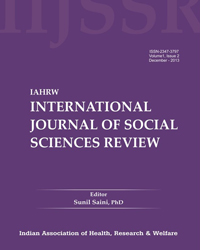Two Sides of a Coin: A Review of Literature on the Relationship Between Bipolar Disorder and Creativity
Subscribe/Renew Journal
Duality of human nature has often been the centre of numerous works of art. However, what has been relatively hidden is the underlying duality in the makers. Starting from Greek philosopher Aretaeus of Cappadocia's notes which mention mania and melancholia as two manifestations of the same ailment in the 1st century B.C (Angst & Marneros, 2001). However, the modern conceptualization of bipolarity as a disorder was done by Emil Kraepelin (Bar & Ebert, 2010), and named it “manic-depressive insanity". One of the seminal works about the link of bipolar disorder, the manic phase to be more precise; was written by Lloyd-Evans et al. (2006) that has partly inspired this undertaking. There is a persevering belief in western communities that creativity and the manic phases of bipolar disorder are somehow linked. That has been investigated in this paper. While there are some beneficial effects of unfiltered stimuli entering brain during the manic phase on creativity, no definite causal relation between bipolar disorder and creativity has been found.
Keywords
Bipolar Disorder, Creativity, Creative Population, Target Population, Manic Episode.
User
Subscription
Login to verify subscription
Font Size
Information



